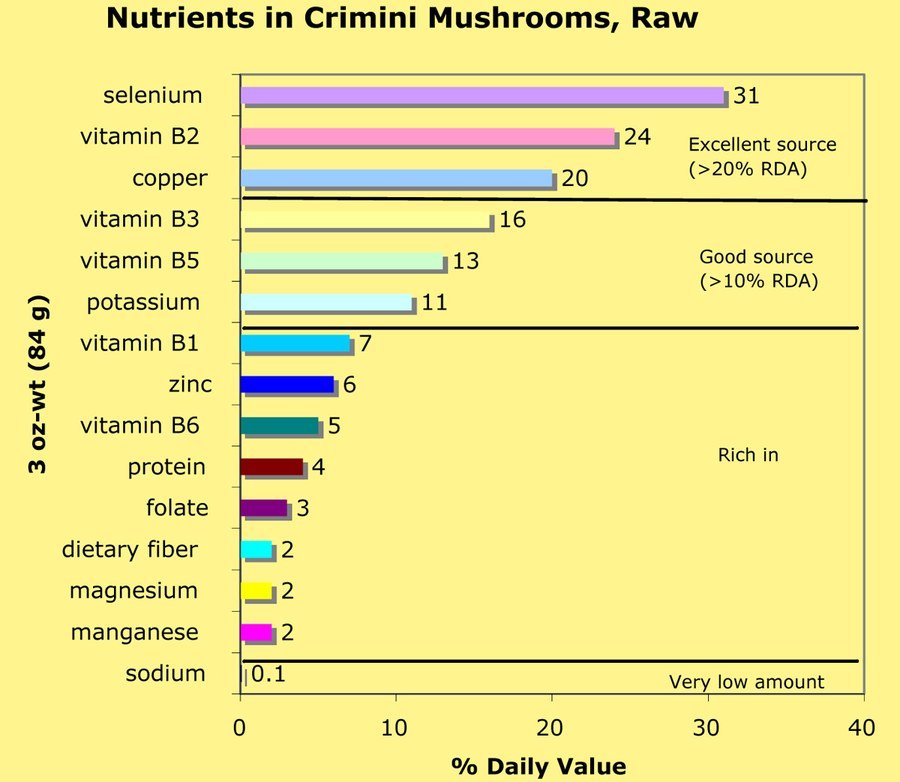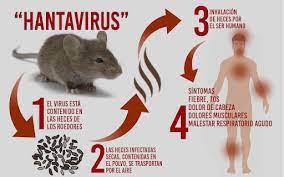Nutrients Crimini Mushroom Farm

Mushroom Farm are a decent wellspring of various supplements. Information introduced in Figure 7 exhibit this with Crimini mushrooms. They are a superb source (contain more than 20% of the RDA in a serving) of selenium, riboflavin (nutrient B2) and copper and are a decent source (contain more than 10% of RDA) for niacin (nutrient B3), pantothenic corrosive (nutrient B5) and potassium. Criminis additionally contain rich measures of thiamin (Vitamin B1), zinc, nutrient B6, protein, folic corrosive, fiber, manganese and magnesium. Then again, mushrooms are low in fat, sodium and calories.
Nutrient D
Ongoing examination has shown that when UV light is gleamed on mushrooms, there is a significant lift in the nutrient D2 content of the mushrooms. A solitary serving of mushrooms will contain more than 800% of the suggested day by day remittance (RDA) of nutrient D2 once presented to only five minutes of UV light subsequent to being gathered. This might be an advantageous way for individuals who don’t eat fish or drink milk to get their every day necessity of nutrient D.
Dietary fiber (DF)
Mushrooms contain various complex carbs including polysaccharides, for example, glucans and glycogen, monosaccharides, disaccharides, sugar alcohols and chitin. Most polysaccharides are primary parts of the cell dividers (chitin and glucans) and are inedible by people; subsequently they might be considered as dietary fiber. Dietary fiber might assist with forestalling numerous infections predominant in well-to-do social orders. Portobello mushrooms contain a more elevated level of DF than the white assortment of mushrooms.
Selenium
A serving (3 ounces) of Crimini mushrooms gives close to 33% of the RDA for selenium, as indicated by the USDA National Nutrient Database. Selenium has been displayed to diminish prostate malignancy by over 60% as per discoveries from the Baltimore Longitudinal Study on Aging. Men with the most minimal blood selenium levels were 4-5 times bound to have prostate disease than those with the most noteworthy selenium levels and that selenium levels will generally diminish with age.
Selenium levels can be dependably expanded in mushrooms by adding sodium selenite to mushroom fertilizer. Some business supplement producers are currently adding this compound to their deferred discharge supplements for mushroom culture.
Potassium
Crimini mushrooms are a decent wellspring of potassium, a component that is significant in the guideline of circulatory strain, upkeep of water in fat and muscle, and to guarantee the appropriate working of cells. A 3-ounce Portobello contains more potassium than a banana or an orange. Until this point in time, endeavors to upgrade the potassium content of mushrooms have met with just restricted achievement.
Cell reinforcements
Portobello and Crimini mushrooms are acceptable wellsprings of cell reinforcements and rank with carrots, green beans, red peppers and broccoli as great wellsprings of dietary cancer prevention agents. They are rich wellsprings of polyphenols that are the essential cancer prevention agents in vegetables and are the best wellspring of L-ergothioneine (ERGO) – a powerful cell reinforcement just created in nature by parasites. Crimini mushrooms contain more than 15 times more ERGO than the beforehand most popular dietary wellsprings of ERGO.
Ecological Concerns
Scents
Disturbance objections, an aftereffect of mushroom fertilizer arrangement in nearness to neighborhoods, are an issue for some mushroom ranches. Hostile scents related with the planning of mushroom farm fertilizer are the essential explanations behind these grievances. A blend of suburbanization and the increased affectability of everyone to ecological issues have concentrated on this issue. Producers have taken on a few measures to lessen the ecological effect of mushroom cultivating, including the act of constrained air circulation of Phase I fertilizer contained in shelters or passages. Notwithstanding, the issue of hostile scent age keeps on putting strain on mushroom farm producers.
Removal of post-crop mushroom fertilizer
After the last flush of mushrooms has been picked, the developing room ought to be cut off and the room purified with steam. This last purification is intended to obliterate any vermin that might be available in the yield or the woodwork in the developing room, accordingly limiting the probability of overrunning the following harvest.
Post-crop mushroom fertilizer (MC) is the material left over after the yield has been ended (Fig. 8). It has many uses and is an esteemed item in the agricultural business. One of the significant employments of MC is for concealment of ordnance organisms in scene mulch. The ordnance organisms develop quickly all through sodden scene mulch, and produce tacky spore masses about the size of a pinhead. These spores are persuasively released toward light shaded surfaces, for example, house siding and vehicles. When the spores dry they are almost difficult to eliminate without leaving an unattractive earthy colored stain on a superficial level. The consolidation of 20-40% MC into mulch successfully stifle the cannons organisms.
End
It requires roughly 14 weeks to finish a whole creation cycle, from the beginning of treating the soil to the last steaming off in the wake of collecting has finished. For this work a mushroom farm cultivator can expect somewhere in the range of 0 to 8 lb for every ft2; the public normal for 2006 was 5.92 lb for each square foot. Last yield relies upon how well a producer has checked and controlled the temperature, mugginess, bugs, etc. Taking everything into account, the main factors for great creation have all the earmarks of being experience in addition to a natural feel for the organic rhythms of the business mushroom. The creation framework used to grow a harvest can be picked after the essentials of mushroom developing are perceived.





